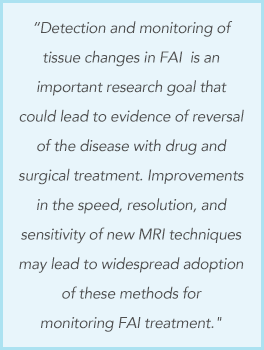|
||||
| A Message from the SMRT Publications Committee about the Home Study Educational Seminars | ||||
 |
Anne Marie Sawyer, B.S., R.T.(R)(MR), FSMRT Home Study Program Lucas Center for Imaging Stanford University, Stanford, California, USA T: +1 650 725 9697 E: amsawyer@stanford.edu |
|||
|
MRI of the Hip and Shoulder We are pleased to present the SMRT Educational Seminars, Volume 19, Number 2: “MRI of the Hip and Shoulder." This is the 72nd accredited home study developed by the SMRT, exclusively for SMRT members. The accreditation is conducted by the SMRT acting as a RCEEM (Recognized Continuing Education Evaluation Mechanism) for the ARRT. Category A credits are assigned to each home study, which can be used to maintain one’s ARRT advanced registry. SMRT Home Studies are also approved for AIR (Australian Institute of Radiography), NZIMRT (New Zealand Institute of Radiation Technology) and CPD Now (The College of Radiographers, United Kingdom) continuing professional development (CPD) activities.
The authors of the second article, Postoperative MRI of the Shoulder," provide a detailed description of MRI techniques to reduce metal artifacts. "Metal from hardware and micrometallic shavings related to burring by surgical instruments can produce artifacts on magnetic resonance imaging (MRI) related to magnetic susceptibility. This represents a distortion in the MR image resulting from inhomogeneity of the local magnetic field introduced by the metallic object into an otherwise homogeneous external magnetic field B0." Various procedures for treatment of injuries are discussed including definitions, indications, appearance on MRI and complications for each. In addition to MR images, diagrams are included which provide insight into a complex joint and surgical interventions. A special thank you to Bobbie Burrow, R.T.(R)(MR), FSMRT from Atlanta, Georgia, USA for acting as the Expert Reviewer. Thanks also to Heidi Berns, M.S., R.T.(R)(CT)(MR), FSMRT, Chair of the SMRT RCEEM Ad-hoc committee from Coralville, Iowa, USA and all those who participate on this committee by reviewing the home studies for accreditation. Finally, many thanks to Kerry Crockett, Associate Executive Director, Mary Keydash, Director of Marketing, Sally Moran, Director of IT and Web, Barbara Elliott, SMRT Coordinator, Linda O-Brown, Education Coordinator, and the entire staff in the Concord, California, USA office of the ISMRM and SMRT for their insight and long hours spent supporting these educational symposia. To access
the new Educational Seminar, |
||||
|
Signals is a publication produced four times per calendar year by the
International Society for Magnetic Resonance in Medicine for the benefit of the SMRT membership and those individuals and organizations that support the educational programs and professional advancement of the SMRT and its members. The newsletter is the compilation of editor, Julie Strandt-Peay, BSM, RT (R)(MR) FSMRT, the leadership of the SMRT and the staff in the ISMRM Central Office with contributions from members and invited participants.
|
||||

 Two
peer-reviewed articles appear in this home study issue. In the first
article, MRI of the Hip for the Evaluation of Femoroacetabular
Impingement; Past, Present, and Future, the authors maintain "Femoroacetabular
Impingement (FAI) has become a controversial topic in the radiology
and orthopedic literature in a relatively short time." The
comprehensive article reviews imaging techniques, comparing past
with current and future. The challenge that the authors explore is
"if FAI truly leads to OA, as many authors contend, then one would
expect a much higher incidence of OA amongst the general
population." Their belief is that "improvements in the speed,
resolution, and sensitivity of new MRI techniques may lead to
widespread adoption of these methods for monitoring FAI treatment."
Two
peer-reviewed articles appear in this home study issue. In the first
article, MRI of the Hip for the Evaluation of Femoroacetabular
Impingement; Past, Present, and Future, the authors maintain "Femoroacetabular
Impingement (FAI) has become a controversial topic in the radiology
and orthopedic literature in a relatively short time." The
comprehensive article reviews imaging techniques, comparing past
with current and future. The challenge that the authors explore is
"if FAI truly leads to OA, as many authors contend, then one would
expect a much higher incidence of OA amongst the general
population." Their belief is that "improvements in the speed,
resolution, and sensitivity of new MRI techniques may lead to
widespread adoption of these methods for monitoring FAI treatment."